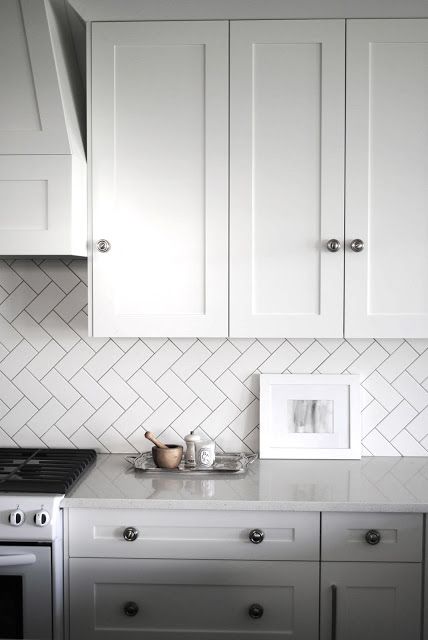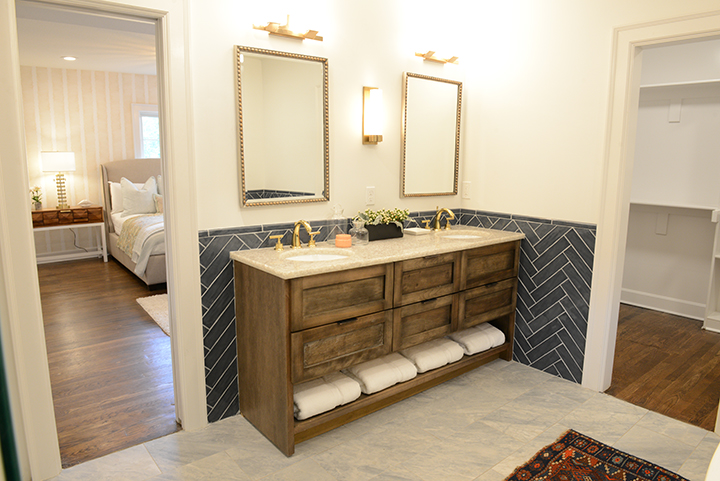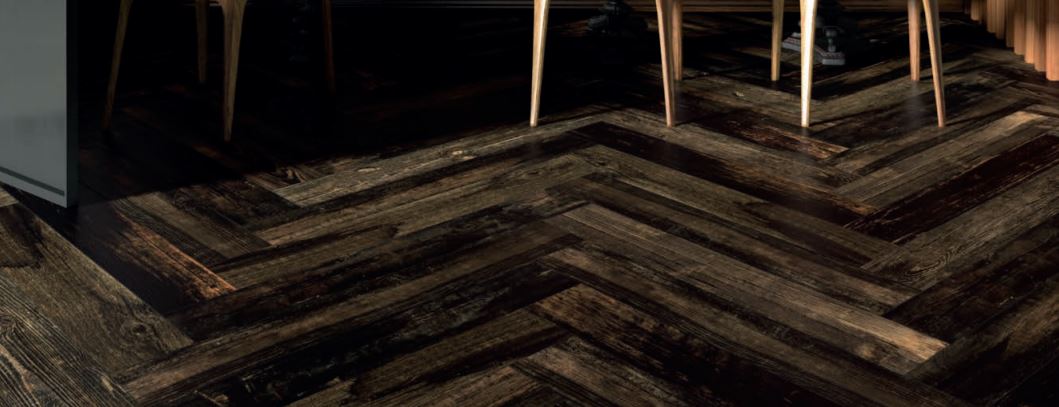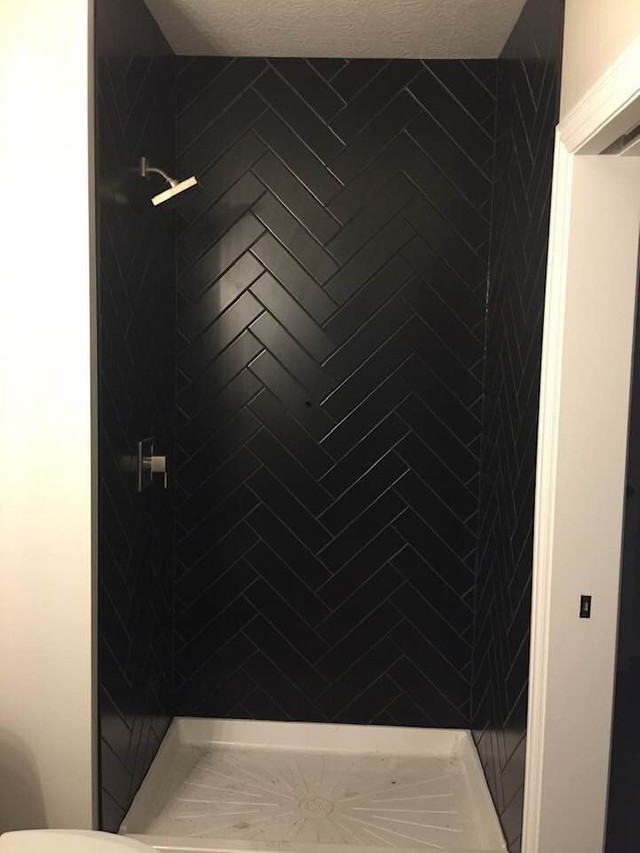Designing with Herringbone Tiles
Almost everyone, at some point, has wished to have his own space. Aside from getting your privacy, having your own space also means getting the freedom to decorate your room however you want it to look. Imagine getting a room painted in your preferred color and decorated with your favorite items. Sounds good, right?
Creating Beautiful and Low-Maintenance Space Using Herringbone Tiles
As the movie quote says though, with great power comes great responsibility. While getting your own space is wonderful, it also requires maintenance. Think of weekly cleaning: dusting, wiping, sweeping, mopping, and scrubbing for at least half a day. It can get a bit difficult. The good news is home designs nowadays have gone beyond aesthetics. Aside from being pleasing to the eyes, innovations have produced materials that are functional and easy to clean. One example is the herringbone tile or herring backsplash.
Why should I use tiles?
Using tiles for walls instead of merely painting or installing wallpaper is better in terms of safety, cost, and maintenance. Given the material used in tiles, which is usually ceramic, surfaces covered are easier to clean as they do not absorb stain, moisture, or odor. This also means that they are more sanitary since they are not susceptible to mold and fungi formation.
With proper cleaning, bacterial contamination can be prevented as well. Consequently, after installation, any spillage or splashes on the surface requires minimal to no repairs at all, making it cost-efficient for long-term maintenance.
What is a backsplash?
A backsplash is a wall covered in washable material such as ceramic tiles to prevent damage due to splashing of water, oil, and other liquid substances. This is usually seen in the kitchen, particularly the areas above the sink, the counter, or the stove. It can also be found in the bathroom, specifically on the walls of the shower, the bathtub, or the vanity.
How does a backsplash look?
A common design of backsplash is the herringbone tile pattern, or simply the herringbone tile (interchangeably called tile herringbone as well). This pattern is inspired by fish bones. It is done by creating rows of parallel lines slanting in alternate directions to form zigzags or overlapping V shapes. Aside from tiles, this is also used in fabric and wood. Herringbone tiles as used specifically in backsplashes is called herringbone backsplash or herringbone tile backsplash.
The herringbone tile pattern creates a unique wall that deviates from the usual single-colored painted walls. A wide array of colors is now offered in hardware stores. Moreover, choices over materials such as ceramic, wood, glass, and stone are also available.
Where can I use herringbone backsplash in my home?
A common use of herringbone backsplash is in the kitchen. It has become a classic design for this part of the house as it highlights the cooking area. By using different-colored tiles, the stove area can be accentuated. Aside from being visually pleasing, it also makes the area easier to clean.
Whenever you cook, food spatter is unavoidable. Frying, for example, could cause oil to swash on the wall. Similarly, sautéing could cause small amounts of sauce to sprinkle. Lastly, simmering and boiling also cause moist to form.
With a herringbone kitchen backsplash, your cooking area is not only pretty to look at; it is also faster to clean. All you have to do is wipe off the particles after cooking, and you are already done cleaning. Imagine if your walls were painted instead of tiled. Your kitchen would be permanently stained!
The cooking area is not the only place in the kitchen that tends to get messy. The same can be said for the sink area. Used dishes, cups, and other utensils pile up after every meal. Sadly, while tiles are often used for kitchen counters, the walls are often neglected.
Aside from being stained with food, walls tend to get wet whenever you wash your hand or do the dishes. As a frequently used area, using tiles and creating a kitchen backsplash will make it easier for you to clean your kitchen, as well as maintain good walls.
Where else can I use the herringbone tile?
As mentioned earlier, aside from the kitchen, you may also use tiles in the shower or the bathing area. The amount of liquid that comes in contact with the walls of the bathroom is definitely greater than that of the kitchen sink area. The walls of the bathroom get wet with water everyday. Shower, bathtub, sink—almost every nook of the room becomes moist at best and flooded at worst.
Given this, designing the shower with patterned tiles has become almost instinctive to every homeowner. If there is a herringbone kitchen backsplash for the cooking area, there is a herringbone tile shower for the bathroom. The zigzag pattern created by the tiles may be used to draw attention to certain parts of the bathroom like the vanity or the shower.
Can I use the herringbone tile on the floor?
Yes, herringbone tiles may be used on the floor. You are not limited to the kitchen and bathroom for this. As compared with walls, using tiles on the floor is more common. Having said this, choices in types of tiles to be used as flooring are also more diverse. If you check flooring catalogues online or in stores, tiles with herringbone design are abundant. For flooring, some of the available materials are glass, ceramic, wood, and stone.
Herringbone tile floor is very versatile and can be installed in almost every room. It is a good option as well over carpet. Fluids, dust, and moisture are not absorbed by tiles unlike with carpet, making it more hygienic and easier to clean, similar with wall tiles.
How do I design using the herringbone tiles?
There is a lot of ideas online on how you can utilize herringbone tiles in your home.
1. Draw attention to a part of a room by creating an accent wall.
An accent wall differs in design from the other walls. It became very popular in the early 2000s wherein one wall is painted in bright color contrasting the other neutral-colored (usually in white or any muted hues) walls.
What makes accent walls great is they allow you to play around a part of the room. Instead of paint, why not make use of wooden herringbone tile for the wall behind the headboard of your bed or the wall of your fireplace? You may put up tiles on the entire wall or you may also opt to decorate only a portion of a wall. You can create contrast by choosing a different color, texture, or material. Your imagination is the limit.
2. Go classic with either wooden or marble herringbone tile floor.
You can never go wrong with a timeless herringbone tile floor in wood or marble design. Flooring that is in neutral palette and classic design makes a room easier to decorate. It gives you more freedom to choose either to go bright or do minimalist for your walls.
Always remember that classic does not need to be boring. If anything, it actually allows you to have a better canvas for your walls. Besides, no matter how simple-looking your flooring is, there is still a variety of shades and colors available for herringbone tile floor.
3. Let light seep in with glass herringbone tile shower.
Using glass herringbone tile shower is good for two reasons. First, it maximizes the lighting in the room allowing you to bathe properly. Second, it is easier to clean since water stains are less visible due to the translucent color.
While accent walls with dark colored tiles look good in the shower, they can be difficult to maintain. Since the bathroom walls and the floor usually get wet, the room is prone to water stain. This requires proper cleaning, and unfortunately, the normal bathroom bleach and toilet cleaner will not cut it. These will leave white residue on the tile surface.
No matter how much you clean your bathroom, if the tiles have residue build-up, it will still look dirty. Make your bathroom easy to maintain and easy to the eyes by opting for glass or light-colored ceramic herringbone tiles instead.
4. Create focal point with herringbone kitchen backsplash.
As mentioned earlier, backsplash is ideal in the kitchen, particularly in the kitchen sink and in the stove area. Unlike the bathroom, it is easier to choose a color for the herringbone kitchen backsplash as it is not prone to water stains. Similar to accent walls, you can play up a bit in your kitchen.
If you are on a budget, you may choose to do an accent wall by using herringbone tiles only on the wall of the stove area. You may also cover only half of the kitchen wall, leaving the upper half of the kitchen in paint.
There are really no rules in here. The only important thing is for you to be able to cover the surfaces which are prone to food and water splatter.
5. Highlight an outdoor area with herringbone tile floor.
For outdoors, herringbone tile floor can be used. Choose materials like stone, marble, or wood for your patio or veranda. This creates a complementing contrast to the outdoor view.
Why is there a need to install flooring on outdoor spaces? This is so you can prolong the good quality of your furniture. Think about your outdoor furniture standing on grass, constantly exposed to moist and dirt. While pretty to look at, pieces of outdoor furniture can be better maintained when put in an area with good flooring.
Can I create beautiful herringbone tile patterns on my own?
Using herringbone tile patterns, while classy, can be daunting for a lot of people. Given its unique pattern, misalignment in tiles can easily be spotted. But yes, you definitely can do it on your own! Channel your creativity by going the do-it-yourself (DIY) route. This will be cheaper than hiring a professional to install your herringbone tiles.
For the not-so artsy types, do not worry, you can still do it DIY too. Thankfully, unlike before wherein rectangular tiles are manually placed on the surface to create the zigzag patterns of herringbone, nowadays, there is an option to use square tiles. For those who are not confident with their steady hands, these square tiles are simpler to use.
I want to DIY my herringbone tiles! Where do I start?
There is no definite way or step-by-step process to start your DIY-herringbone tile journey. If this is your first time to decorate your space using tiles, though, look through the tips below to get an idea on how to go about your designing.
1. Do your research and look for inspiration.
Check online or in magazines for photos you would like as peg for your kitchen, your shower, or any room you would like to design for that matter. You might probably have something in mind already, but there is a lot of resources available when it comes to home design.
Spare some time to look for your herringbone tile inspiration and get as much information as you can. What type of tile was used? What color and shade is it? Where was it bought? How much did using these tiles cost? The more information you get, the easier your shopping will be.
2. Measure your room.
Once you have your design inspiration, take the necessary measurements you need and list them down. If you are going to do an accent wall, make sure you do not only take the measurements of the area you will design, but the whole surface as well. This is in case you change your mind after seeing the wide array of tile choices for your backsplash or flooring.
3. Go tile store hopping.
By tile store hopping, it means that you have to visit more than one store. This is so you can properly check the available materials you need. As with any shopping, it is best if you check your options.
While it is time consuming, going to more stores means being able to make the best choice, depending on your budget and your preferred design. New ideas might also come up when you see the actual materials on display.
Take photos and list down prices. Do not be shy to talk to the sales personnel as well. Ask for recommendations and tips. Lastly, do not forget to ask as well whether the materials you want are available on-hand or if these will still be pre-ordered. Again, get as much information as you can. Consider the visit as part of your research.
4. Check your home and your options.
After going hardware store hopping, weigh your options. Based on your room’s needs and your budget, what is the best material to use, and which store has it? Compute how many tiles you will need, depending on the area you will decorate. Most probably, you will end up with uneven materials—meaning you will need to cut tiles to fill in your desired space for flooring or backsplash. If this is the case, how do you imagine going about with the design? Where do you put the excess tiles so that you can fill in the area without disrupting the herringbone tile pattern? These are questions you need to answer before buying.
5. Make the purchase.
Once you are sure of the materials you need, go back to the store and make your purchase. Make sure you not only buy the tiles, but also the other materials that you will need for the installation such as grout and cement. If you are not sure how much you will need, you may ask assistance from the store personnel to help you compute, depending on the tiles you will buy. If possible, drop some queries as well so you can get pointers on how to do your walls or your flooring.
6. Set a date to do your DIY herringbone tile designing and make the necessary preparations.
You have completed your purchase. All that is left is for you to do the actual installation. Before that, however, you will need to set a date and prepare the room. For example, if you will be designing a herringbone kitchen backsplash, you might need to move your stove and cooking utensils. For your herringbone tile shower, you might need to determine where you will be temporarily bathing.
Take note that for tiles to be fully set, ideally, you need to leave it for twenty-four hours. Afterwards, you will need to put grout to fill in the gaps between the tiles. This will need another twenty-four hours to dry as well. Given the required drying time, plan ahead on the needed adjustments.
7. Review installation guidelines and check your notes from sales personnel.
As mentioned earlier, your small talk with the sales personnel from the hardware store goes a long way. Compare the information you were told with tile installation guidelines online. Look for best practices before doing the actual thing.
If you think you have enough information on tile installation, begin your DIY journey. If you are not confident though, you can choose to contact a professional instead. After all, it’s better to be safe than sorry. If you choose the latter, make sure you follow any aftercare or maintenance instructions given to you.
My herringbone tile backsplash / shower / floor is ready for use. Now what?
Again, the point is to create a space that is your own. After installation, it is very important that you maintain your room neat and clean. This way, your space will stay pleasing to the eyes for a long time.
From walls to floors, there is always a way to make your space beautiful yet easy to maintain. Always explore for functional designs and materials that will suit your taste and your lifestyle. Happy decorating!




